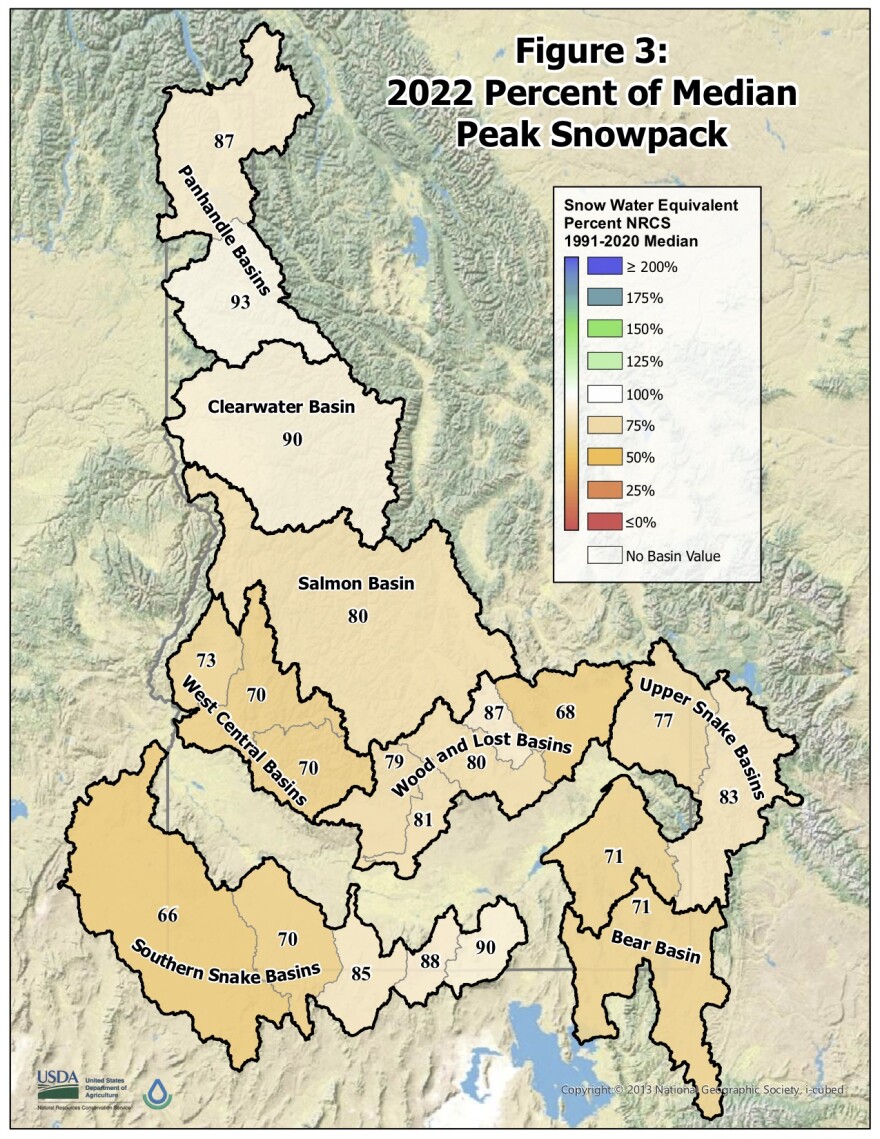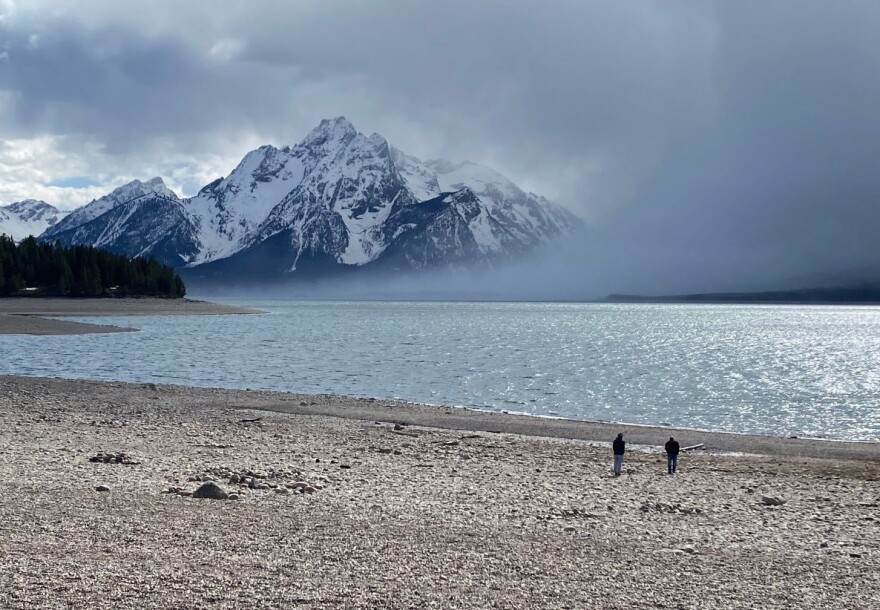Idaho started the calendar year with very little snowfall, but a switch flipped in May delivering above-normal precipitation across the board.
Still, about three-quarters of the state remains in a drought.
So, where does that leave the summer water outlook?
Things are getting better
Precipitation in May was normal to above normal all over Idaho. According to the Natural Resources Conservation Service’s June water outlook report, the Boise Basin came out on top with 217% of the month’s normal precipitation totals.
“Overall, the picture has improved so much since April 1,” said Erin Whorton, the NRCS water supply specialist. “We’re really happy to see that it has been a wet and cold spring from the water supply perspective.”

The spring rains help in several ways. For one, in many basins, it means farmers are not yet reliant on water from reservoirs and can make do with natural streamflows. The cold has also delayed mountain snow melting.
It also means better soil moisture, so when snow continues to melt in the mountains, the water is more likely to make it to the streams and the reservoirs because the ground is already saturated.
Low snowpack still hurts
The less-good news is that the whole state got below normal snowpack this winter, thanks to a major dry spell between January and March. And the spring rain can’t completely make up for that loss in moisture.
“Rainfall is like water today, water now, and that’s helpful, for now,” Whorton said. “But it doesn’t play as much of a factor in terms of water later in the dry summer when we need it for growing crops and things like that.”

Snowpack is like our water in the bank for the late summer months, Whorton said. And with peak snowpack as low as 66% in the Owyhees, paired with the fallout from the drought last year, the banks are not full.
Reservoirs south of the Snake River are below normal and forecasts are predicting water supply shortages in basins such as the Big Wood, Big Lost, Little Lost, Oakley and Owhyee.
What will the summer bring?
Whorton said the mix of low snowpack and solid spring precipitation makes it difficult to know what summer streamflow conditions will look like.
One thing that could make the outcome worse is if the National Oceanic and Atmospheric Administration’s prediction for a hot and dry summer rings true. That could lead to Idaho farmers needing more water for irrigation.The bottom line
Whorton said people should know Idaho is not out of the woods when it comes to drought.
“Water supply and drought conditions are still a concern for this summer,” she said.

Because of consecutive drought years, and a below-normal snowpack, irrigation demands will likely deplete reservoirs by late summer.
“That sets us up for needing another big snowpack year or a really rainy fall to build up our reservoir storage and start next water year, the next irrigation season, in a really good place,” she said.
Find reporter Rachel Cohen on Twitter @racheld_cohen
Copyright 2022 Boise State Public Radio




